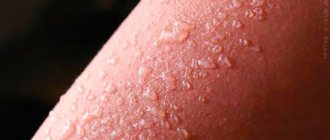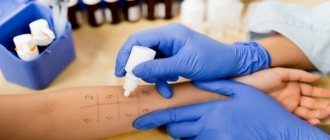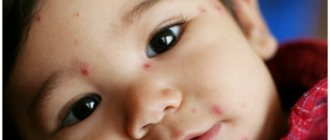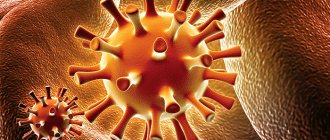Such a phenomenon, which seems infrequent at first glance, like pimples in the mouth, is actually quite common.
Photo 1 - Pimples in the mouth are common
They cause inconvenience when eating and drinking, which is why they can be confused with sore throat and other diseases.
Photo 2 - Pimples in the mouth cause discomfort
If you look closely at the oral cavity in the mirror, you will notice watery or even purulent pimples on the tongue, palate, throat, and cheeks. The inflammations themselves may differ from each other in size and color.
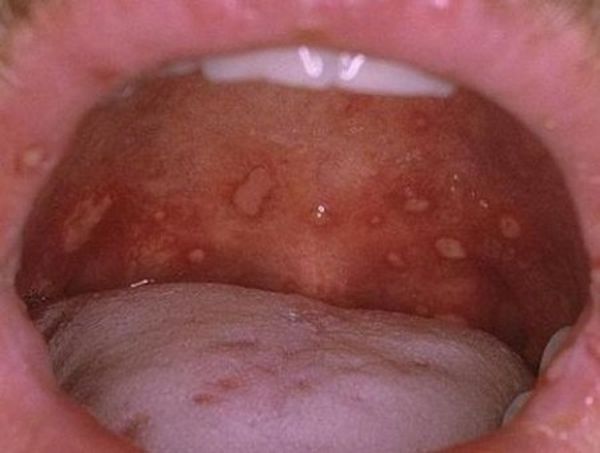
Photo 3 - Inflammations in the mouth can be varied
White pimples in the mouth on the gums
A rash that is observed in the gum area of a small child indicates the presence of the following pathologies:
- A minor pimple may be a regular wen. This phenomenon is not potentially dangerous for the baby, especially if it does not increase in size. It is forbidden to touch such a bubble, squeeze it out or perform other manipulations at home.
- A disease such as inflammation of the oral mucosa - stomatitis - can also be to blame. Therapy in this situation is also prescribed by a dentist.
- In very young children, a pimple may occur as a concomitant symptom of teething.
- The white formation may be an abscess or a cyst.
If you notice such symptoms, you must consult your doctor. You should not engage in self-diagnosis, much less self-medication.
Rash in the mouth in a child and an adult: causes of red and white dots and spots on the palate and cheek
Enanthema is what doctors call a rash in the mouth.
Rashes on the extremely sensitive mucous membranes of the tongue, palate, gums, inner lips, cheeks, and back of the throat cause a lot of trouble and require immediate treatment.
In both adults and children, a red rash on the roof of the mouth and mucous membranes of the mouth is a sign of an infectious disease or an allergic reaction .
Causes of rashes on the oral mucosa in children and adults
The causes of oral rashes are numerous. Often, the presence of rashes in the mouth indicates dental diseases, dysfunction of organs and systems, and hormonal imbalances. The type of infection can be determined by the nature of the spots and accompanying symptoms. The dentist should make a diagnosis and determine a treatment regimen.
Viral and bacterial infection
Red spots on the palate of a child and a rash on the tonsils are most often caused by viral or bacterial infections. An infectious lesion in a child or adult is accompanied by a febrile state (fever, sore throat, and in some cases chills).
The cause of rashes can be influenza, chickenpox, diphtheria, ARVI, scarlet fever, meningitis and other serious diseases. At a young age, children often encounter stomatitis and herpes sore throat. These diseases are severe, accompanied by acute pain, attacks of nausea and bowel dysfunction.
Fungal infection
Spots that have arisen due to the penetration of fungal agents into the body require special attention. The most common fungal disease of the oral cavity is candidiasis (thrush). Caused by microscopic fungi of the genus Candida.
Their activity increases after illness, when the immune system is weakened, when taking certain medications. You can distinguish such a rash in the mouth by a white coating in the oral cavity - on the cheeks, on the mucous membrane, on the tongue.
The treatment regimen is chosen by the attending physician after determining the type of pathogen and depending on the patient’s medical indications.
Allergic reactions, poisoning
Enanthema in adults and children is often a consequence of an allergic reaction of the body or intoxication. In both cases, it is presented in the form of small red dots on the palate, tongue, and inner surface of the cheeks. Swelling of the soft tissues is also characteristic, which often leads to bronchospasm and Quincke's edema.
Any rash is a reason for medical examination. For effective treatment and elimination of associated symptoms, it is necessary to identify the allergen that provoked the pathological changes. The most common causes of enanthema of this etiology are:
- material for dental structures and fillings;
- Food;
- toothpastes, mouthwashes, brushes;
- medications;
- teethers, pacifiers.
With an allergic rash, there is no fever or other symptoms of infectious diseases. The rash is located symmetrically throughout the mucous membrane, in some cases it can occur in certain areas of the skin. In case of poisoning, swelling of the soft tissues, an increase in temperature are possible, and sometimes plaque appears on the tongue and the inner surface of the cheeks (on one or both sides).
Rare specific diseases (granuloma, petechiae, sarcoma)
Specks can sometimes indicate the presence of a rare specific disease. In this case, the rash looks like pinpoint red spots or looks like a large spot, located mainly in the throat and palate. The following pathologies are distinguished, characterized by similar symptoms:
- Kaposi's sarcoma. It presents multiple formations on the skin in the form of flat or convex plaques, has a bright purple color with additional shades (red, brown). Quite often it is diagnosed inside the oral cavity (on the palate), on the lymph nodes, and in rare cases - on the internal organs. The disease mainly develops in HIV-infected people.
- Pyogenic granuloma. A benign vascular formation that occurs in areas subject to frequent trauma or affected by staphylococcus. It has a red-cherry hue and looks like a dense rounded nodule. The pathology does not hurt, grows quickly and reaches its maximum size in just a few weeks.
- Palatal petechiae are scattered round spots on the palate or at the top of the oral mucosa (you can see the appearance of the rash in the photo).
When should you contact a specialist?
Regardless of the nature of the rash in a child (it is present only on the mucous membrane of the throat or distributed throughout the body), you should immediately seek help and explanation from a doctor. Such symptoms may indicate the presence of dangerous viruses or infection in the baby’s body.
Without treatment, enanthema of a viral or infectious nature can cause serious complications and spread to internal organs. To determine the exact cause of small rashes, the ENT doctor conducts a thorough examination of the throat mucosa. If necessary, additional tests may be prescribed: general blood and urine tests, allergen identification, etc.
Types and nature of rashes in the oral cavity
A rash in the mouth is a sign of a developing disease. Rashes have different appearances, so it can be quite difficult for doctors to identify their true cause at first glance. The photo below with explanations shows examples of various rashes.
There are several types of rash in the mouth:
- Blisters with serous fluid. Common with herpes and chickenpox.
- Blisters are dense, irregularly shaped formations without a cavity. They appear suddenly and quickly disappear. Itchy blisters often occur with hives or allergies to insect bites.
- Pustules are deep or superficial. The internal cavity of the formations is filled with turbid contents.
- Spots - a change in the shade of the mucous membranes, some areas become lighter or scarlet.
- Ulcers. Formed as a result of the development of pustules and blisters. They deeply affect the mucous membrane.
- Nodules. They look like separate plaques that visually merge into one (for example, with candidiasis).
- keratinization. Observed in hairy leukoplakia of the mouth.
Usually the rash in the mouth has a red or scarlet tint. It is characteristic of scarlet fever, stomatitis, and allergies. White color is rare. Such a rash is observed with chronic tonsillitis or infectious diseases.
White dots and spots on the uvula, accompanied by pain and fever, are usually diagnosed with stomatitis.
If there are white specks on the upper palate and the root of the tongue, and the baby has a fever, a sore throat and swollen tonsils, a viral infection cannot be ruled out.
READ ALSO: what to do if a white spot appears on the gum after tooth extraction?
Other diseases
There are a few more diseases that are rare and cause an atypical rash:
- Mononucleosis. Not only the throat, but also the entire mucous membrane in the mouth turns red. The tonsils are enlarged and the throat is sore. It’s difficult to breathe, my nose is stuffy. Bright large spots appear along the sky.
- Pyogenic granule. Places that are often injured turn red.
- Kaposi's sarcoma. Purple spots on the mucous membrane, convex or flat. It happens with HIV infection.
If the doctor notices an atypical rash, he will check to see if the child has something similar. Never self-medicate.
Diagnostic methods
The diagnosis of rashes is made by a local physician, pediatrician, or dentist. It is necessary to contact specialists immediately after identifying the problem, so as not to aggravate the course of the disease. In a number of situations, the attending physician gives a referral for additional examination to an infectious disease specialist, ENT specialist, or gastroenterologist. The following diagnostic methods are used to make a diagnosis:
- visual examination of the patient’s mucosa;
- taking anamnesis;
- taking tests - blood tests, allergy tests, coprogram;
- laboratory examination of a smear from the mucous membrane (if fungal infections are found, fungal micelles are found, if atypical cells are detected, a referral is given for a blood test for tumor markers);
- tests for sexually transmitted diseases, etc.
Source: https://osp-sakhalin.ru/rotovaya-polost/krasnye-tochki-na-nebe.html
Red growths
Red pimples in a child's mouth and an inflamed tongue that is covered with blisters can be caused by various forms of stomatitis or allergic reactions.
Gingivitis also causes inflammation that spreads to the gum area. The infectious process can affect the tongue and make itself felt in the form of red blisters. Herpes virus infection, when activated, manifests itself by the appearance of red pimples. Neoplasms are localized in the throat, affecting the tongue and lips.
Pathologies of an infectious nature, such as tonsillitis, tonsillitis, etc., are often accompanied by the appearance of a red rash in young children. This makes it very difficult for the baby to swallow food.
Also, red formations can be a sign of scarlet fever. In this case, a rash is observed throughout the body, the child is worried about fever and fever.
Common infectious diseases
Infections of varying severity periodically complicate a person’s life, leaving behind no antibodies or immunity to the pathogen. Therefore, specks on the back of the throat, bubbles on the gums and red dots on the roof of the mouth can appear in the mouth of any adult, and not just in a baby or teenager.
Relapses of infectious diseases occur as a result of weakened immunity due to influenza, acute respiratory or enterovirus infections, chronic diseases, hypothermia, and stress. Many of them are accompanied by a red rash and blisters on the palate, hemorrhages and erosions.
Herpes
Many people mistakenly believe that the blistering rash of herpes only affects the lips on the outside. In fact, it can be localized in any part of the oral cavity, skin, and even on the mucous membranes of internal organs.
The vast majority of people are carriers of the herpes virus, since once they enter the body, viral particles remain in it throughout their lives. When the body's immune defense is weakened, the virus is activated and appears as a red rash on the face and oral mucosa.
Watery pimple in the mouth: what is the reason
Transparent watery bubble in the mouth on the mucous membrane
Often such rashes make themselves felt with chickenpox. This symptom is usually observed in young children. The rash occurs not only on the mucous membranes of the mouth, but also in the intimate area. The throat, eyelids and the entire body are often affected. Pale pimples become watery over time. The liquid then begins to flow out under the influence of certain factors, then a crust forms on the wound.
It is worth noting that this disease is very dangerous due to its contagiousness.
They only get it once in their life. When a child becomes infected, the disease manifests itself within three weeks. This is the incubation period. At the same time, the baby is worried about high fever and high temperature. The smallest children experience vomiting and dyspeptic disorders. The rashes are very itchy and cause severe discomfort to the patient. In this case, it is necessary to take therapeutic measures as quickly as possible.
You should not contact someone who is infected. The fluid contained in the blisters is considered particularly contagious.
There is a pimple on the roof of the mouth due to disease, causes - treatment and prevention
Pimples bring a lot of trouble when they suddenly appear on the face or other part of the body. Rashes on the palate, under the tongue, cause even more discomfort. If a pimple has formed in the mouth on the roof of your mouth, it is better to immediately visit the doctor’s office, because without treatment it will be difficult for the patient to even pronounce words or eat.
Causes of acne in the mouth
Every day, many bacteria enter the oral cavity, which, given favorable conditions, can provoke any disease. Pimples can be large or small, red, white or with purulent contents. Since children's immune system is not yet strong enough, children are much more likely to develop various types of pimples in the mouth than adults.
Rash due to illness
Rashes in the mouth due to infectious processes are usually observed in childhood. Colds, coughs, and sore throats can lead to small rashes along with other signs of illness.
High fever, poor health, a red, sore throat with a small rash occurs not only in children and requires urgent treatment. In the future, in addition to pimples, a white coating forms in the throat, which is even more dangerous for health.
In addition to colds, rashes in the mouth can be caused by measles, chickenpox and other infections that most often affect children.
Causes of rashes on the palate
Even a small scratch can cause pimples to appear on the palate if the wound becomes infected. The main causes of rashes on the palate include:
- allergic reaction of the body;
- gastrointestinal diseases;
- infectious process of the oral mucosa.
What acne should you pay attention to?
The nature of the rash will tell you when you need to see a dentist so as not to miss the initial period of a serious illness. In any case, a rash with a white coating requires urgent medical examination. The cause of this condition may be tonsillitis, diphtheria and other dangerous diseases.
You should be alert to painful ulcers on the roof of your mouth, which may be a sign of lupus erythematosus. A common cause of rashes is stomatitis, during which small wounds form in the mouth. Fungal stomatitis leads to ulcers with cheesy contents; the bacterial form of the disease is indicated by a large number of pimples throughout the oral cavity.
Transparent blisters caused by the herpes virus are dangerous. There is a clear liquid inside the formations, and they also cause discomfort and interfere with eating. This rash is characterized by rapid reproduction, and when it bursts, painful ulcers appear. Usually herpes stomatitis is accompanied by high fever and general weakness of the patient.
Which pimples will go away on their own?
Acne due to colds poses less danger to children and adults. They are caused by ARVI, tonsillitis, pharyngitis. Due to a decrease in local immunity, small pimples form in the mouth, which disappear after treatment of the underlying disease.
Another factor for the appearance of a rash in the mouth is allergies. Acne occurs when a person does not take oral care products, certain medications or food products. In such cases, it is important to eliminate possible allergens, then the disease will go away on its own.
Which doctor should I contact?
If a rash appears on the palate, it is better to immediately contact a dentist, who will accurately determine the type of illness.
If, before the appearance of acne, the patient has an infectious disease, for example, a sore throat or a common cold, a therapist will prescribe treatment.
Childhood diseases such as measles require examination by a pediatrician and an infectious disease specialist. If the cause of the rash is an allergy, you cannot do without consulting an allergist.
Common types of rashes on the palate
Angina
Herpes stomatitis
Bacterial stomatitis
Viral stomatitis
Measles
Modern treatment
Most types of pimples form in the mouth against the background of other diseases, therefore in such cases all treatment methods must eliminate the main cause of the disease. Only a specialist can establish the causes and an accurate diagnosis. You cannot self-medicate, but before visiting a doctor’s office, follow the following recommendations:
- do not squeeze pimples;
- keep your mouth and teeth clean;
- do not eat spicy or too salty foods, so as not to irritate the mucous membranes;
- do not drink hot tea or other drinks;
- Rinse your mouth with a herbal decoction in case of severe discomfort.
Typically, professional treatment methods include:
- rinsing with antiseptic solutions;
- drugs with anti-inflammatory effects;
- pain relievers;
- antibacterial therapy;
- antifungal or antiviral agents;
- antihistamines in case of allergies.
It is important to follow all the recommendations of specialists, because interrupted treatment threatens that the disease will return again. A small amount of pimples can be quickly eliminated, but if the pathology is started, then bad consequences will not keep you waiting.
Provoking factors
Provoking factors that contribute to the appearance of ulcers and pimples include:
- accidentally biting your tongue with your teeth;
- lesions caused by a very hard toothbrush;
- exposure to toxic substances;
- sharp teeth or poorly placed fillings;
- poorly selected braces to correct the bite;
- damage to the mucous membrane during dental intervention.
If the ulcers are caused by the influence of the listed reasons, the wounds heal very quickly after removal of the traumatic factor. In this case, the condition does not manifest itself as severe pain if you do not eat too spicy or hot foods.
Aphthous stomatitis in a child
Sometimes wounds due to trauma can provoke new pathologies of a chronic nature with a strong spectrum of pathological effects, for example, with aphthous stomatitis.
General and associated symptoms
If the bubbles have formed in the oral cavity not as a result of injury, then the following symptoms of pathology are observed:
- intense fever due to high temperature;
- the baby is mischievous due to excessive dryness of the mouth;
- lack of appetite: food causes irritation and pain;
- the formation of a dirty grayish or greenish coating;
- the baby suffers from nausea and headaches;
- in severe cases, the neoplasms bleed, pus is released, which causes halitosis;
- discomfort when swallowing;
- swelling in the neck and gums.
If the phenomenon is caused by injuries or damage, bruises, hematomas, and abrasions occur.
Pimple on the palate - how to get rid of it?
If you experience pain when swallowing or eating, then you may have a pimple on the inside of your cheeks, gums, or roof of your mouth. It is usually accompanied by redness or small swelling. In some cases, the body temperature even rises. The reasons may be different:
- damage to the mucous membrane;
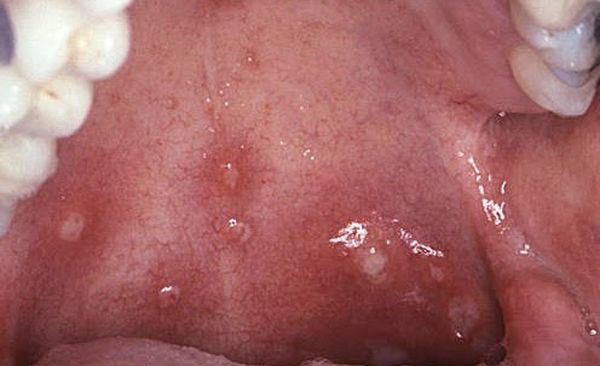
Photo 9 - Damage to the mucous membrane may be the cause - getting or developing any infection;
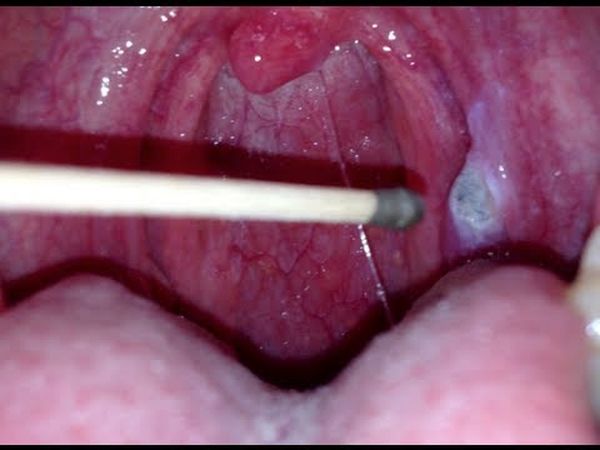
Photo 10 - Infection may be the cause - allergic reaction;
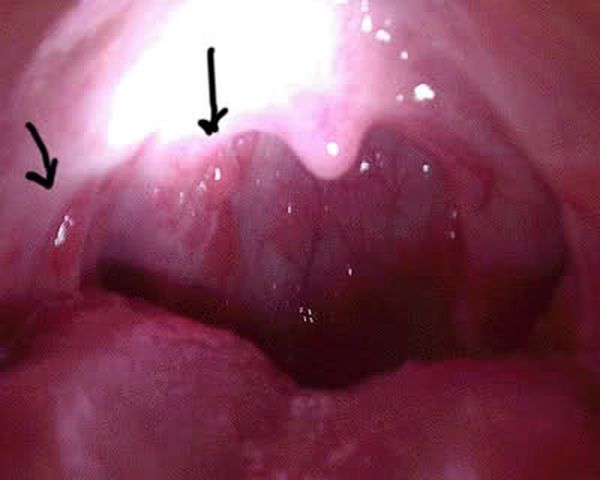
Photo 11 - Allergies may be the cause - problems with immunity, etc.
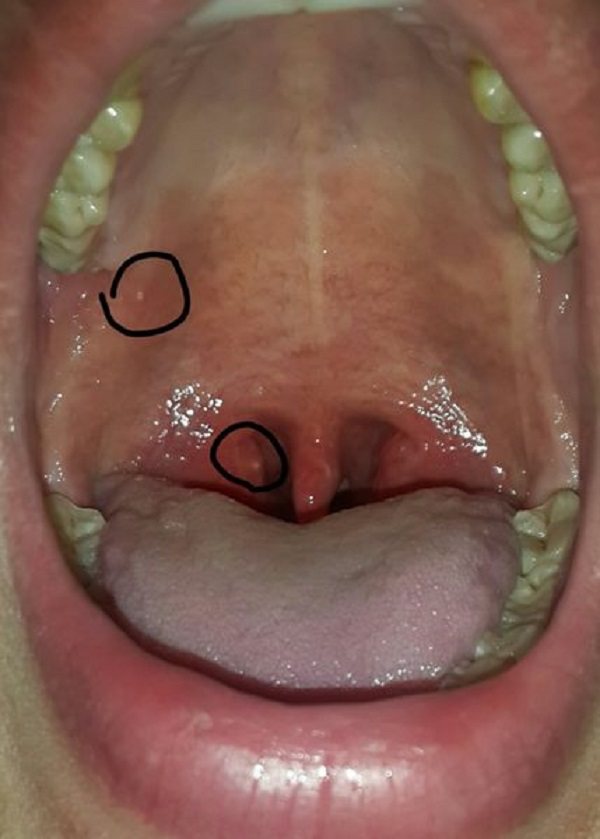
Photo 12 - The cause may be reduced immunity
An ordinary scratch or slight prick can ultimately lead to more serious problems, including in adults. Very quickly a fairly large pimple forms on the gum or palate. For treatment, you should take an antifungal and antiviral drug, and use a restorative gel for the oral cavity.
Attention. Healthy sleep and a proper diet will help strengthen the body and restore immunity.
Diagnostic methods
To study chronic lesions of the mucous membrane in children, you need:
- collect a detailed medical history;
- learn objective symptoms;
- carry out differential diagnosis in order to identify or exclude specific pathologies: HIV, RW, tuberculosis;
- conduct a cytological and bacteriological examination of the fluid of the ulcers.
Only a qualified doctor can correctly diagnose a child and prescribe effective treatment, otherwise the situation can significantly worsen.
Therapeutic measures
To alleviate the health condition and complete recovery, the correct therapeutic tactics are necessary. When the formation of bubbles is caused by mechanical action, treatment involves removing unnecessary objects and carefully treating the wounds. In case of chemical exposure, it is necessary to wash the sores with soapy water, soda and citric acid.
White pimples in the mouth on the gums of a child: photo
Candidiasis on the cheek
If pimples appear as a result of local or systemic pathology, complex treatment is necessary:
- antiviral and painkillers;
- rinsing with herbs or antiseptic solutions;
- medicines to reduce fever;
- drinking in large quantities;
- the chronic form requires complex treatment;
- for bacterial lesions, antibiotics and antihistamines are prescribed;
- It is imperative to carefully adhere to hygienic principles and take vitamins.
In the presence of systemic pathologies, treatment is carried out in conjunction with therapy for the underlying disease as a provoking factor.
Pimples in the mouth in adults and children - symptoms, treatment methods and diseases
White pimples in the mouth indicate a malfunction of the immune system, the presence of a dangerous disease, or neglect of the rules of intimate hygiene. The microflora of the oral mucosa instantly responds to the action of pathogenic microorganisms, viruses and bacteria that provoke inflammation of the nasopharynx.
After diagnosing acne in the oral cavity, it is necessary to identify the cause of their appearance and only then prescribe comprehensive treatment.
Children's infectious diseases - diagnosis and specifics
Thrush in a child's mouth
Small pimples in a child’s mouth are indicators of the presence of a disease that may be hidden. The exception is newborn babies who are breastfed. They may experience minor redness in the oral cavity for up to a year, which is covered with a white coating.
This disease is called thrush , and is caused by the spread of fungal colonies of the Candida type. Pediatricians advise wiping white pimples in a child’s mouth with a soda solution.
If colonies of microorganisms spread (you can see the photo) after stopping breast milk, you should consult a doctor to get a prescription for drug treatment with antifungal drugs.
Pimples on the inside of a child's cheek may be covered with a whitish coating or have a swollen surface. They may indicate the development of infectious diseases such as:
- lupus erythematosus;
- chicken pox;
- scarlet fever;
- mumps;
- whooping cough or measles.
The incubation period of each disease is 3 days . At this time, transparent pimples in the mouth, a sore throat, an increase in the size of the tonsils, an increase in body temperature and microscopic cracks on the lips, accompanied by a slight discharge of blood, may appear. Sensitivity of the front teeth and gums is noted.
Diseases are infectious in nature, and the appearance of acne is considered as an isolated symptom indicating negative processes in the body. Therefore, there is no point in trying to treat tumors.
Treatment is prescribed by a pediatric infectious disease doctor, writing a prescription for antibiotics, anti-inflammatory and antipyretic drugs.
Pimples in the mouth appear quite rarely in adults.
They are indicators of the presence of a hidden disease inside the body, which can be chronic. Initially, tiny ulcers appear on the palate or inside of the cheek, characterized by the presence of an internal depression in the soft tissue.
Over time, they develop into raised pimples on the lining of the mouth, which can spread to the throat and along the gums, causing bleeding. Their appearance may be a sign of:
Watery pimple
- venereal disease (a symptom of syphilis, ureaplasmosis or HIV infection);
- herpes localized in the oral mucosa (exacerbation of the disease is observed in the autumn-spring period);
- bacterial stomatitis, affecting the soft tissues of the nasopharynx (pimples resemble ulcers that cause pain when eating, drinking, spitting);
- candidal stomatitis, characterized by pimples in the mouth of an adult, covered with a dense layer of white plaque (develops against the background of a weakening of the immune and regenerative functions of the body).
Purulent white pimples in the mouth can be indicators of diseases of the circulatory system and infection, the source of which is in the intestines. Dysbacteriosis provokes a disruption of the microflora in the oral cavity, causing an inflammatory process inside the soft tissues.
To treat a pimple on the roof of your mouth, you need to see a doctor and start strengthening your immune system by taking vitamins and normalizing the caloric content of your daily diet.
Primary care for acne on the cheeks, gums and tongue
If a watery pimple appears in the mouth, or an ulcer covered with a white film, you should immediately review the menu. During the period of exacerbation of inflammation of the mucous membranes, citrus fruits, sweet and sour fruits and concentrated juices containing amino acids are excluded from the list of products.
Some vegetables should be heat treated to keep the food soft.
Rusks, chips, tough meat, fresh pears and apples can damage the watery layer of the ulcer and cause the rash to spread.
Treatment methods
An independent course of treatment should not be prescribed. Many people look at the photo and begin to rinse their mouths with decoctions, tinctures and traditional medicine. Only an experienced doctor can accurately diagnose a white pimple in the mouth and determine the cause of its appearance.
If the palate, cheeks and tongue are covered with a transparent coating with a white tint, rinsing is initially prescribed:
- a decoction of oak bark, celandine, yarrow, nettle and birch;
- chlorophyllipt solution;
- boiled water with the addition of oil essence of sea buckthorn berries.
If a pimple in the mouth on the cheek causes unbearable pain or frequent itching, a specialist may prescribe an analgesic drug. It should be taken according to a prescription, taking into account precautions and existing contraindications. Treatment for neoplasms on the mucous membrane should be comprehensive. Doctors use:
- medications;
- antimicrobial and antifungal ointments;
- lotions that soothe inflammation;
- immune therapy aimed at strengthening the body's protective functions.
The use of toothpastes and personal hygiene products containing alcohol and lauryl sulfate in the combined composition is temporarily excluded. The molecules of these substances deform the transparent layer of the ulcers, causing them to increase in size up to three times .
Prevention of oral diseases
Adults and children must observe basic rules of personal hygiene in order to avoid the need to treat the disease that has arisen. Every day in the morning and evening you should:
- brush your teeth using antibacterial agents, eliminating the likelihood of bleeding gums and the formation of caries (whitening pastes can be used no more than once every six months);
- use dental floss treated with an antimicrobial solution;
- rinse your mouth with a solution of soda or herbal tincture of chamomile, which helps normalize the acid-base balance and heal microscopic wounds.
Once every three months, it is recommended to visit a dentist who can treat teeth at an early stage of damage. Caries is the first symptom of a disease inside the oral cavity, which can provoke the proliferation of pathogenic microorganisms and fungal colonies .
You should also review your daily diet. People with chronic gastrointestinal disorders and diabetes have an increased risk of developing painful ulcers and lesions on the tongue, cheeks and palate.
Nutritionists advise excluding “fast” carbohydrates, sugars and carbonated drinks from the menu. They disrupt metabolism, slow down the metabolic rate and provoke the appearance of ulcers.
Hands should be washed thoroughly before each meal. This applies to vegetables, berries and fruits. Their peel may contain microbes, bacteria and worm eggs, which are washed off under running cold water.
These simple rules will help prevent problems associated with inflammation of the mucous membranes and the development of infectious diseases.
Source: https://StomaGet.ru/bolezni/pryshhi-vo-rtu
Traditional methods and consequences
Also, together with the main treatment, you can treat ulcers using alternative medicine.
Among the huge number of recipes, the following are highlighted:
- treating wounds with honey and propolis;
- calendula infusion prepared in a water bath for rinsing;
- chamomile, calendula plus linden are an excellent rinse if the bubbles bother the child a lot;
- treatment with hydrogen peroxide would not be superfluous;
- Take three tablespoons of yarrow juice with honey every day for three weeks.
If treatment measures are not followed and the pathology is ignored, the baby will noticeably lose weight, as a result of which his physical development will be slowed down, the enamel will begin to crumble, and dental pathologies will arise, wounds will lead to a decrease in the body’s defenses, the child will often suffer from colds and infectious pathologies.
Prevention measures
To avoid the appearance of pimples in a child’s mouth, you must remember the following principles:
Monitor your child's daily life; under no circumstances allow him to lick or taste all surrounding objects.
If pimples have already appeared, you should immediately show your child to the doctor, even if they are not accompanied by pain or discomfort. Pathology can indicate not only the presence of a dental problem, but also be a symptom of a serious illness. Be sure to provide your child with adequate nutrition and the right amount of vitamins and nutrients.
Prevention of oral diseases
Adults and children must observe basic rules of personal hygiene in order to avoid the need to treat the disease that has arisen. Every day in the morning and evening you should:
- brush your teeth using antibacterial agents, eliminating the likelihood of bleeding gums and the formation of caries (whitening pastes can be used no more than once every six months);
- use dental floss treated with an antimicrobial solution;
- rinse your mouth with a solution of soda or herbal tincture of chamomile, which helps normalize the acid-base balance and heal microscopic wounds.
Once every three months, it is recommended to visit a dentist who can treat teeth at an early stage of damage. Caries is the first symptom of a disease inside the oral cavity, which can provoke the proliferation of pathogenic microorganisms and fungal colonies .
You should also review your daily diet. People with chronic gastrointestinal disorders and diabetes have an increased risk of developing painful ulcers and lesions on the tongue, cheeks and palate.
Nutritionists advise excluding “fast” carbohydrates, sugars and carbonated drinks from the menu. They disrupt metabolism, slow down the metabolic rate and provoke the appearance of ulcers.
Hands should be washed thoroughly before each meal. This applies to vegetables, berries and fruits. Their peel may contain microbes, bacteria and worm eggs, which are washed off under running cold water.
These simple rules will help prevent problems associated with inflammation of the mucous membranes and the development of infectious diseases.
The appearance of acne in the oral cavity may indicate various pathologies. Formations in the palate often indicate dental problems, infectious diseases and other disorders.
To cope with the disease, you must consult a doctor in a timely manner. The specialist will conduct a comprehensive diagnosis and make the correct diagnosis.
